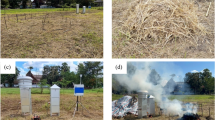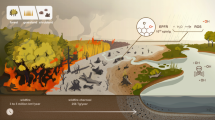Abstract
SIR JOHN RUSSELL in his article on “Crop Damage by Air Attack”1 says: “The most serious risk is on the stubbles, if very dry weather should set in after the harvest.” For the last nine years I have used a combine harvester, and have made a practice of burning some of the straw on the stubbles after harvest. In only two years have the stubbles been sufficiently dry to burn easily. Usually it has needed several men carrying burning straw about on pitchforks to re–light the straw, which tends to burn for a short time and then go out. I have also used a tractor drawing a chain harrow with a mass of burning straw on it to keep the fire going. A combine leaves a longer stubble than a binder, and with the straw lying on top of this it should burn easily if any stubble will. My experience is that once straw and stubble have been well wetted by rain they very rarely dry out enough for the fire to take easily.
This is a preview of subscription content, access via your institution
Access options
Subscribe to this journal
Receive 51 print issues and online access
$199.00 per year
only $3.90 per issue
Buy this article
- Purchase on SpringerLink
- Instant access to full article PDF
Prices may be subject to local taxes which are calculated during checkout
Similar content being viewed by others
References
NATURE, 148, 215 (1941).
Author information
Authors and Affiliations
Rights and permissions
About this article
Cite this article
NORTH, R. “Crop Damage by Air Attack.”. Nature 148, 317 (1941). https://doi.org/10.1038/148317b0
Issue date:
DOI: https://doi.org/10.1038/148317b0



